About four times in any given year I end up in the middle of nowhere in an unreliable car and no cell signal, usually doing something dangerous. This is apparently my new hobby. As such, I’ve been thinking about buying a personal locating beacon, or PLB, to save my bacon when my luck runs out, but there are so many options!
For our 2nd big cheap car challenge road trip, we ended up with a rented satellite phone. All in, this cost about $300 for two weeks and was, I think, a good safety investment. However, due to the cost of renting something like that (~$15/day) doesn’t really make sense on anything but the most extreme road trips.
A cheaper alternative is an emergency beacon. There are a variety of emergency beacons available these days, most of which have some manner of non-emergency tracking and communication.
Of these Garmin and Spot seem to be the primary players in the space. The last time I researched this DeLorme seemed to have the best products, but Garmin acquired them, re-branded their products, and doubled the price.
So, with that, lets launch in to comparing the two three:
Garmin inReach
Garmin has three products in their “inReach” product line, with a buy in starting at $350 for the Mini, $400 for the SE+, and $450 for the Explorer model.
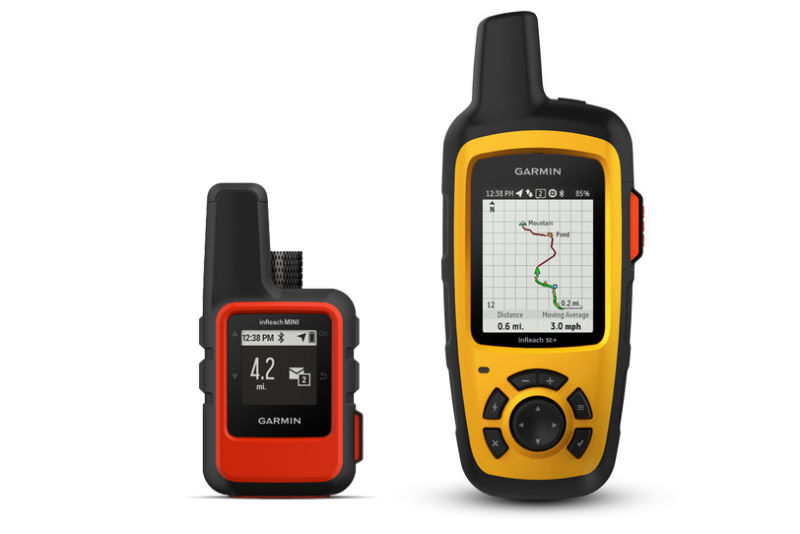
The mini gets you interactive SOS, location tracking, two-way text messaging, and some topo and GPS functionality through your phone. The two-way texting appears to be limited to receiving texts and sending out canned responses.
The SE+ and Explorer add the ability to type out custom messages and have larger screens and more functionality. The Explorer grants full on-device topo maps and “sensors,” whatever that means. Both creep into the territory of all-in-one device as opposed to emergency beacons.
All three devices offer periodic location tracking, which is managed and shared through Garmin’s service “Map Share”. Friends and family can also ping your device to request your location if you haven’t updated in a while.
All three devices require a service plan, which ranges from $145, for a true emergency only plan, to $1000 per year for the “I should have bought a sat phone” plan. The 2nd cheapest plan, named “Recreation,” seems to be the best balance of cost and functionality and comes in at $300 per year.
Plans are available monthly at a higher cost and with an yearly activation fee, which I will cover later.

SOS service is handled by GEOS and allegedly can be augmented by your ability to communicate with them via text to request specific services, rather than just send in the cavalry at great expense.
Looks like you can also pay GEOS a yearly fee to make the rescue cost less, with plans starting at $18/yr and going up from there. So that is... a thing.
All three devices seem to rate well on Amazon and REI, though I won’t lie... part of me objects to paying $400 for a device that used to be $200 when it was made by your competitor.
Spot
Spot has two major models: the Spot Gen 3 and Spot X.
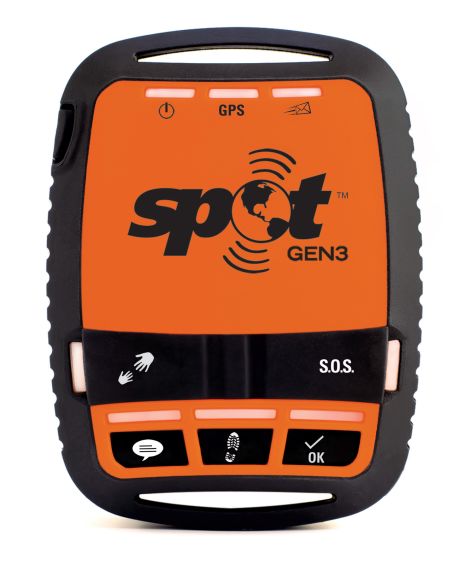
The Spot Gen 3 is similar to the Garmin Mini, but only has 1-way text communication and only costs $150 for the device. You get several pre-programmed messages you can send out (Check-in OK, tracking, help, and SOS) but no ability to receive messages.
The Spot X looks like an old Blackberry and seems to function pretty much like one too. You can send 2-way messages using the keyboard built into the device, rather than the on-screen keyboard on the inReach. Unfortunately, with the full QWERTY you lose the dedicated check in button.
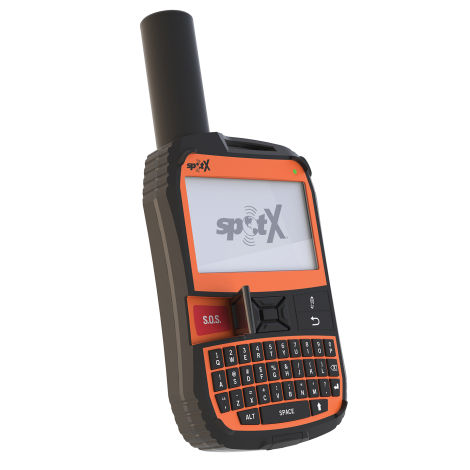
Both devices offer motion activated tracking, with the quickest interval available at the “basic” level being 10 minutes, which seems like plenty. The location details are shared through Spot’s website. Tracking data only stays online for 30 days, so you’ll have to export it if you want to keep it.
The SOS service is also offered by GEOS, so everything I said in the Garmin section still holds true.
The most intriguing feature here is the “HELP” feature which sends a text with your location and a pre-programmed help request to a person of your prior choosing. For an extra fee you get the “Save Our Vehicle” service offered through Spot. Either way, the button is basically an “OH SHIT” button for non-life-threatening situations.
The Save Our Vehicle service is, apparently, offered through Nation Safe Drivers and costs “as low as” an additional $30 per year. As far as I can tell it is a satellite backed AAA-like service that includes some offroad recovery services as well. Unfortunately it appears this feature replaces your ability to contact family for help. Also, the “as low as” qualifier there makes me nervous, information on the plan is pretty thin on the Spot website.
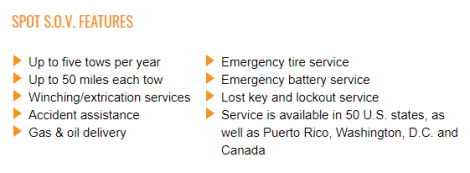
The X rates extremely poorly online, so even though it seems to be worth the $250 price tag, the tales of firmware bugs and poor reliability have me thinking twice about this one.
The Gen 3 also rates pretty poorly with lots of complaints about service gaps even under ideal circumstances and yearly renewals coming without warning.
Worrying.
The Spot Gen 3 can be rented through Spot, but at $75 for the first 3 days and $15 per day after that, I feel like you’d be better off renting a sat phone for the same money. That said, it would be a way to try the service before buying in.
ResQLink
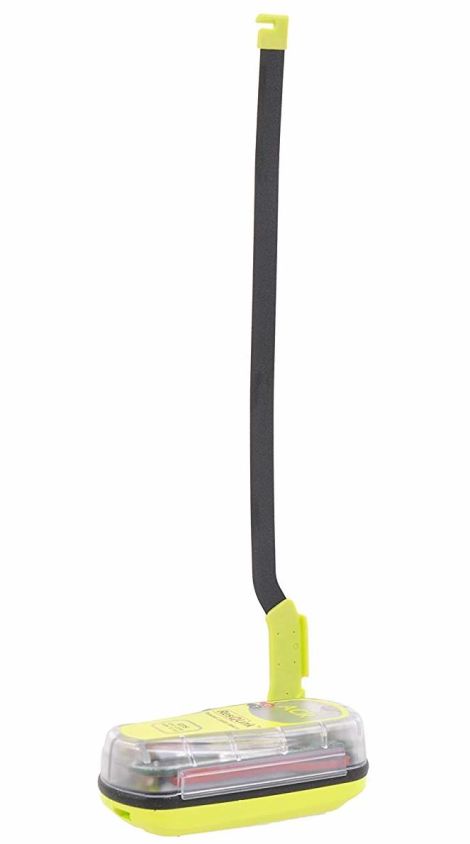
I initially wasn’t going to cover this, but given their place and respect in the market, I felt like I couldn’t ignore them.
The ResQLink is exactly what you think of when you think emergency beacon: brightly colored, big antenna, very few buttons. Turn it on if everything has gone wrong. Don’t if it hasn’t. The battery is internal, non-rechargeable, and rated for 5-years of service with monthly tests.
For a small fee ($40 - $60/ yr) you can send out pre-made SMS messages to contacts using the test feature, but this is not required and will wear down the battery.
The ResQLink appears to get around needed a subscription or maintenance fee by utilizing government search and rescue satellites. On face of it, that sounds pretty cool, but at least a couple user stories indicate the sort of response you’d expect if you utilized the US government to do... anything. Lots of noise, no real action. One story indicated all they got (after being rescued by a passerby) was a voicemail from the Air Force checking to see if it was a false alarm. This is worrying, because it means neither you nor ResQLink have any control over the timeliness or correctness of your emergency response.
I’m not updating the rest of my post to include the ReqQLink. It is a low maintenance, straightforward beacon with a low buy in and $0 maintenance.
Coverage
The Garmin and ResQLink devices operate on the Iridium satellite network, which has decent coverage everywhere on land. Garmin doesn’t offer coverage maps, however. My understanding is the Iridium network is the best of the satellite networks.
The Spot devices use the Globalstar satellite network, shown below.

Service Plans
Both devices require service plans to operate. As you’d expect from any service that is trying to extract maximum cash from the user with their knowledge, there are a dizzying array of options available and some hidden fees as well.
All plans from Spot and Garmin have per year “activation fees,” which is not included in the totals below, unless I specifically note otherwise.
Garmin
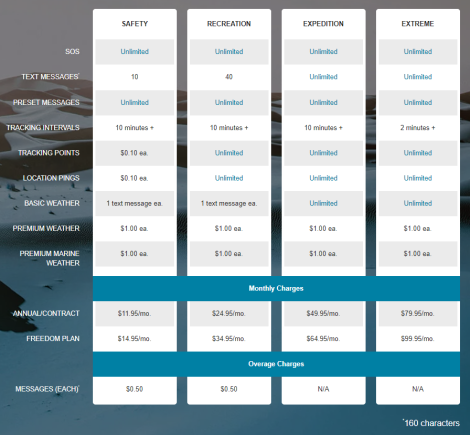
All inReach devices are covered by the same tiers of plans. The cheapest, the “Safety” plan comes in at a $145 per year, but almost everything cost extra. Going up to the $300 per year “Recreation” plan gets you unlimited tracking and 40 text messages. This, to my mind, is the best value as the “Expedition” plan is double the cost but only adds unlimited texting.
Garmin charges a yearly $25 fee, regardless of plan or terms. Additionally, all Garmin plans are available on a monthly basis without an annual contract at a higher cost. Yearly “activation” fee still applies.
Spot

The Spot 3 and Spot X have different plans as the devices are somewhat different. The Spot 3 costs $220 per year, period. ($199.95 plus a $24.95 yearly fee) You can add on the aforementioned “Save Our Vehicle” coverage for an additional $30 per year... probably.
The Spot X has an array of plan options starting at $145 per year, but with that you get unlimited tracking, 20 custom texts, and unlimited predefined messages. Basically the same as Garmin’s “Recreation” plan, but for $10 per month less.
A one time $20 activation fee is charged on initial activation, but not thereafter.
Monthly plans are also available for the Spot X, but not the Spot 3. A $25 yearly “activation” fee applies to monthly plans.
As mentioned above, many of the complaints about Spot come from their yearly auto-renewal and difficulty canceling the service.
ResQLink
Didn’t I say I wasn’t going to include this? Oh well. Basically you can pay either $40 or $60 per year to get responses from your test messages, which some people use as a “soft SOS” or check in. Bit of a hack, but you can’t complain about the price.
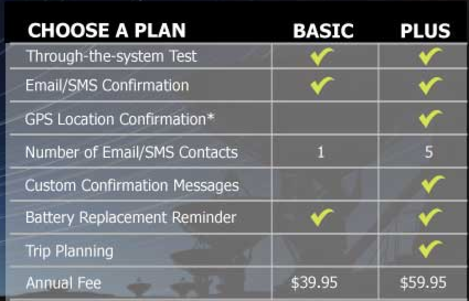
Overall Cost Comparison
So basically there are two ways to look at this: Constant service and intermittent service. The former is pretty self-explanatory, the latter would be if you go on 3-4 trips per year and only activate the device only as needed.
Constant service has the benefit of always being ready for use, no pre-planning required, grab and go. Periodic service can be cheaper if you’re not a heavy user.
Based on my use case, I estimate wanting to use the device four times per year and have based my comparisons on that. The Garmin plan selected is the “Recreation” plan and the Spot the “Basic”.


Interestingly, the Spot X comes out as the winner on cost, with plans starting much cheaper than even the Gen 3, and both clearly ahead of the Garmin units. This was confusing enough that I contacted Spot customer service to see what the deal was. Their response? The X is a newer device and they have no plans on updating pricing on either. Fair enough.
Unfortunately the low review scores for the X certainly put a damper on my enthusiasm for the low cost. I also asked customer service about this, and they indicated they’re working on it. The latest Spot X firmware update was 2/7/19, but a detailed update log is not available.
Conclusion
I’ll be honest, the whole reason I wrote this out is so that I could make a decision, but all I’ve managed to do is confuse myself! I went in thinking the Spot Gen 3 was the way to go, but now all of them seem like viable options.
I’ve come away from this thinking the Garmin products are better made,better supported, and have better coverage. That said, they make you pay out the nose for everything. I’m also a little sour on Garmin because of what they did to the DeLorme devices and services.
I like the ease of use of the Spot Gen 3, but am a little bummed out at how different the prices are between that and the more capable Spot X. I do really like the “I need help but not urgently” button and the ease of checking in. In a lot of ways I like the continued isolation of being able to tell your friends/ family/ oppo that you’re safe, without them being able to send you bad news/ memes. That said, some reviewers have complained about the lack of message received confirmations and the cryptic blinking LEDs.
I like the pricing and style of the Spot X, but the poor reviews for all Spot products make me nervous. You want to buy an emergency device and have it just work. That said, even our rented sat phone got caught in a reboot loop and needed customer service’s help to get going again, so no device is 100% reliable. Also, one could buy either Spot and a ResQLink and still be money ahead of any of the Garmins.
I also found this article after I was done writing mine which... confuses things. If they’d tried the Spot X and hated it, that would make thing simpler, but that they tried it and found it to be the best all-around... that makes things complicated.
I have to say if I was traveling solo, I’d go with the Garmin or the ResQLink. Any degree of uncertainty regarding reliability is too much when traveling alone or in one vehicle.
But, that said, I don’t travel alone or in one vehicle. We travel in a group with 2 or 3, usually with one vehicle per person. This substantially mitigates risk and lends itself to just getting a ResQLink.
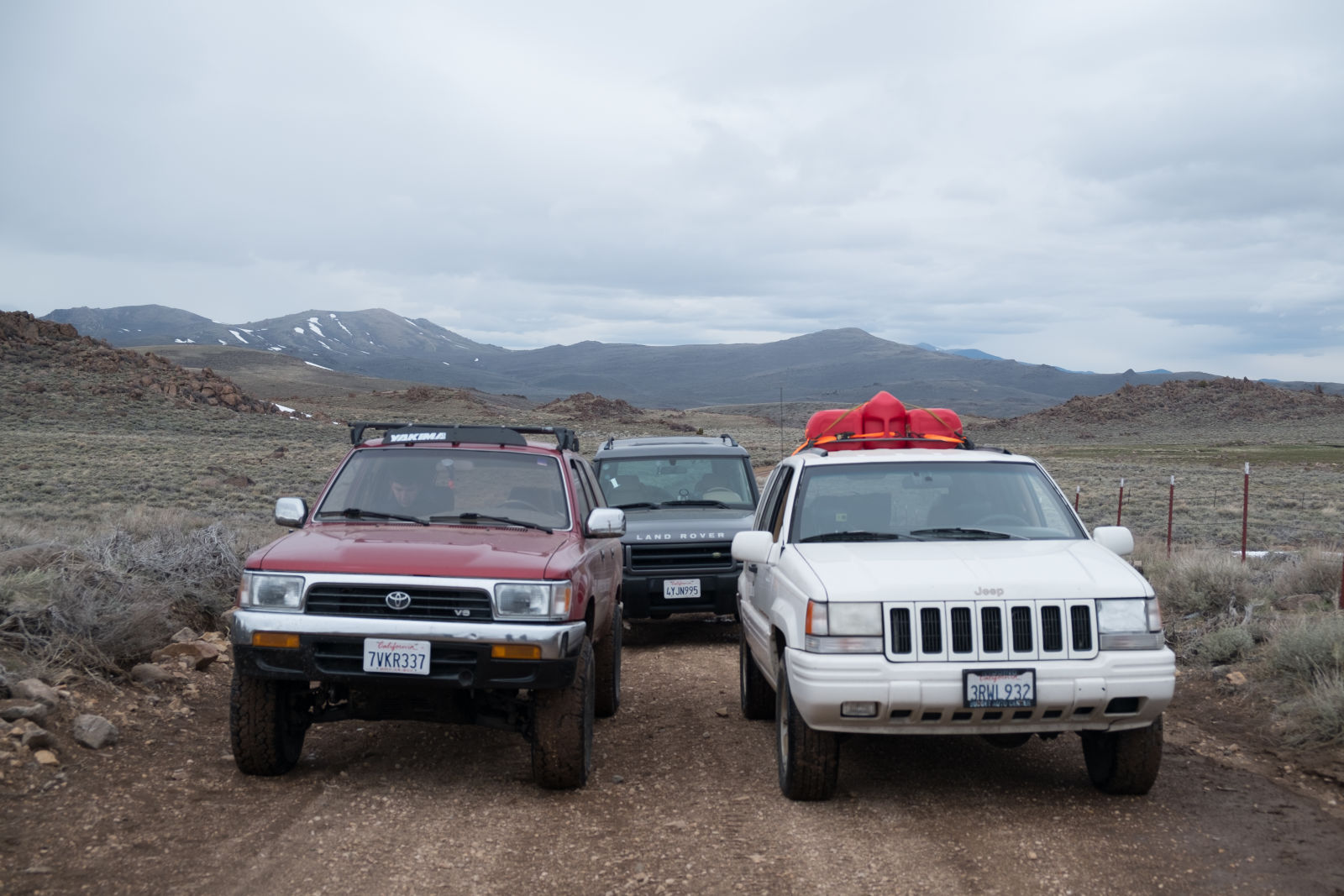
One the the biggest selling points of the Garmin and Spot devices is the location tracking. That sounds interesting and fun, but when you consider the premium you’re paying for it... not so sure. Also Taylor’s phone does that automatically when we’re on trips.
So... I’m torn. I think if I had to choose today, I’d buy the Spot X with a monthly plan, test it, and return it if I didn’t like it.
Or just buy the Garmin...
Or just buy the ResQLink...
What does Oppo think?
